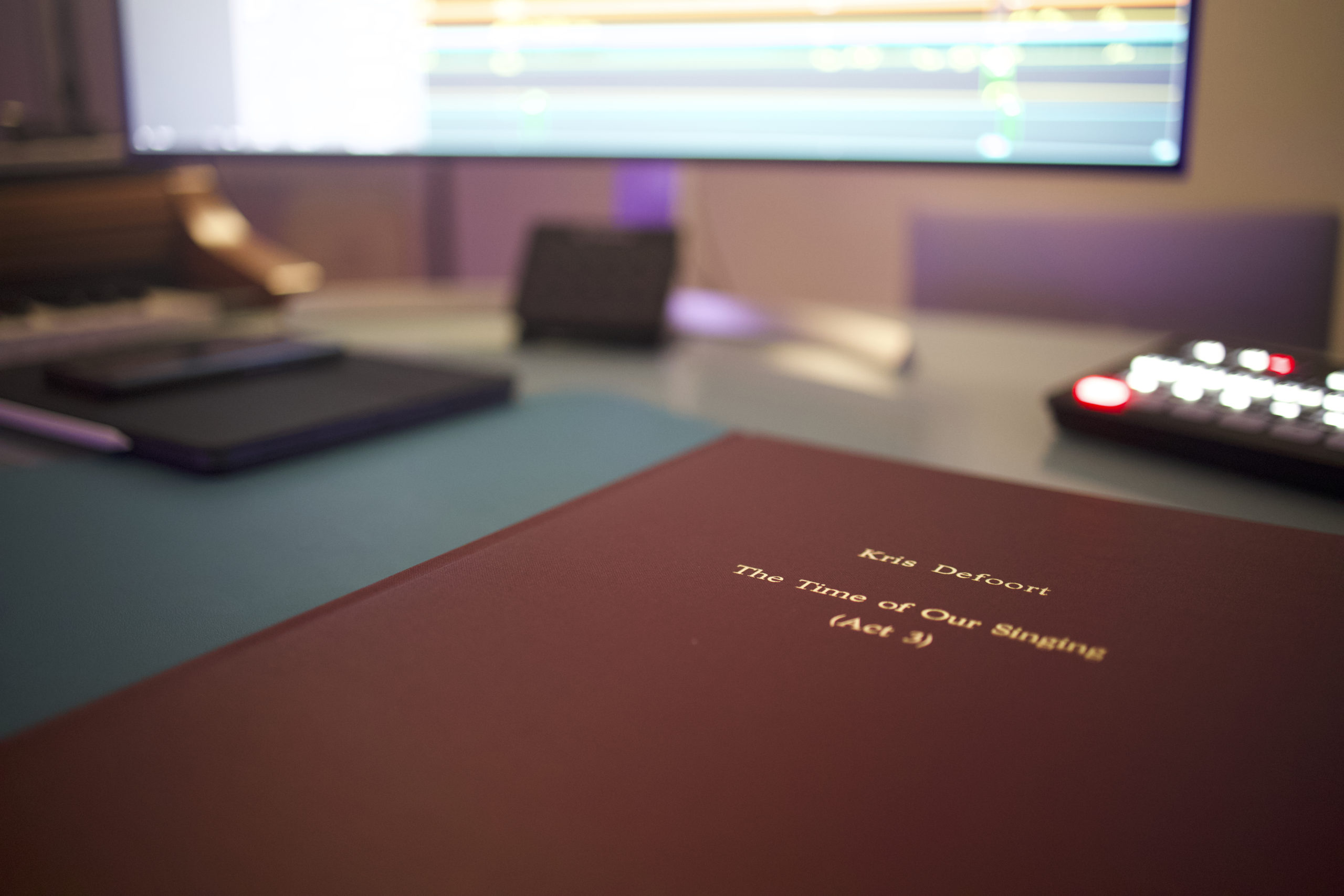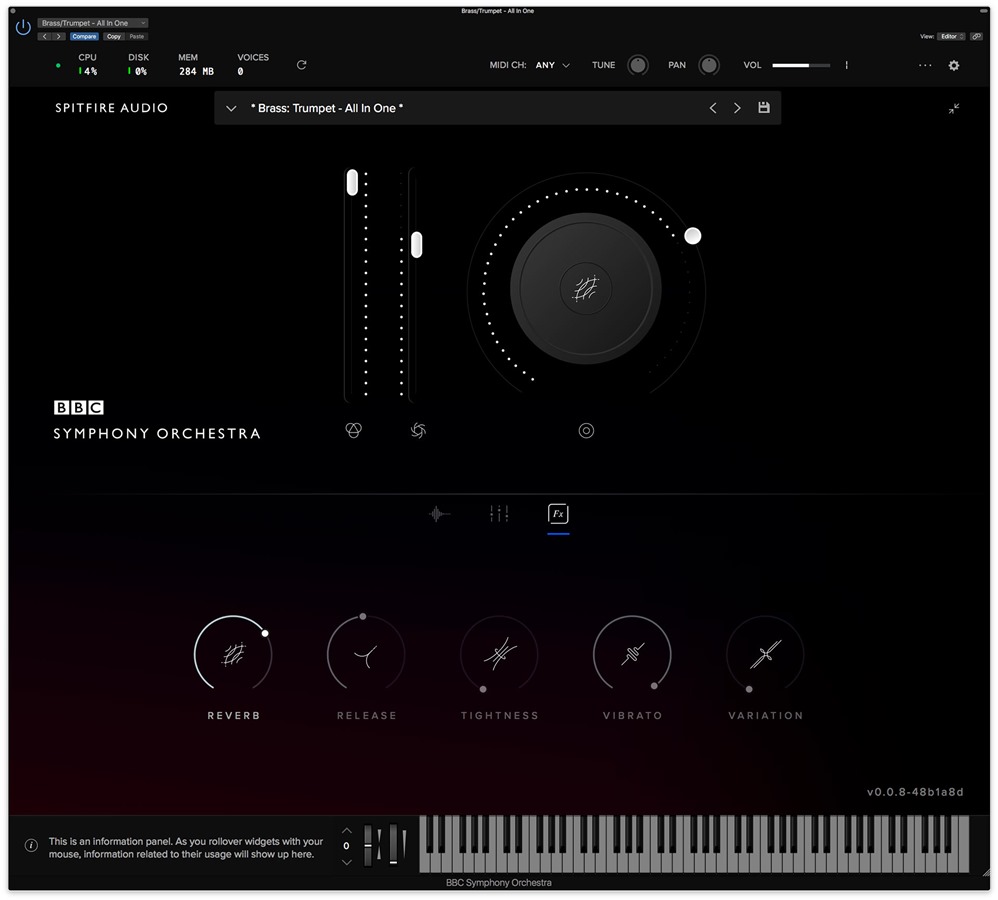Close
The other day, I was watching an interview with the Special Effects Art Director of one of my favourite films, The Mummy (1999). Showing incredible pencil drawings of what became the opening shot in the film, he described how his drawings of an ancient Egyptian plaza at the foot of the Sphinx and several pyramids became the basis for the director’s approval followed by scale model construction and a live action shoot in Morocco, all of which was composited in the computer for the final shot. This kind of pre-visualised or simulated workflow has been on my mind lately as I complete my own pre-production on an upcoming theatrical project, The Time of Our Singing at La Monnaie (Belgian National Opera)
Because it will be a world premiere, there is no existing recording of the piece for the Staging Director and his design team to work with, and the original plan was to organise for vocal students to sing through the piece with piano so that a recording could be made. Not believing that this approach would capture enough of the atmosphere emanating from the opera‘s rich orchestration – chamber orchestra and jazz quartet – I suggested that a digital mock-up be made of the entire piece with vocals recorded over it. Since I myself had done many midi-based simulations of complex orchestral scores, I volunteered to create this one, but found myself on new terrain, as this would be my first foray into the use of sophisticated orchestral samples and compositing multi-take vocal parts over them.
What started off as a fairly simple idea, became a deep, deep rabbit hole of discovery for me, as I not only had to learn Apple’s Logic Pro X Digital Audio Workstation from scratch (I had previously used Sonar before Cakewalk went out of business) but also teach myself orchestral programming, transitioning from the basic samples libraries included with Logic to Spitfire Audio’s BBC Symphony Orchestra samples. I simulated Act 2 using the light samples and Acts 1 and 2 after switching to the cutting edge tech, and the difference in resolution and realism was like watching Star Wars Episode IV – A New Hope (1977) in its original edition and then Star Wars Episode III – Revenge of the Sith (2005): Same world, very different effects!
Apart from the fact that the BBCSO plugins allow for the use of solo strings where the vast majority of other libraries only contain massive symphonic or medium sized string sections, they also allow the programmer to make use of detailed articulation sets to determine the exact colour and attack of each sound as well as how much vibrato is appplied, from none at all to full on (see image below). Add in the option to select – per instrument – which combination of 18 microphone positions are used, making the acoustic feel as reverberant as a massive empty soundstage or as small as dry as the proverbial broom cupboard, and what you’re essentially working with is an “orchestral lab“ in which you can test drive almost any imaginable approach to rendering the sounds in your score.
For a conductor, it’s truly awesome to have every conventional orchestral sound literally at your fingertips on the keys of a midi keyboard – from the drama of a soft bass drum roll to the breathy mystery of a bass flute in its lower registers, from the irradiating effect of a blasting blockbuster brass section to the sweeping emotion of a melody played by choirs of massed violins, violas and cellos. If you can play it on the keyboard, you can almost hear the orchestra play it in your headphones, and I say “almost”, only because even the best orchestral samples only sound human and moving when the programmer exerts control over the modulation of subtle details like phrasing, vibrato, portamento and even seemingly imperceptible variations of tempo (rubato) or note duration (agogic) that real players apply instinctively.
My experience was, that because the starting sound was just so close to being realistic – perhaps 95% of the way there – there was a strong motivation to go for that final elusive 5% which was fascinating but frustratingly time-consuming if you’re doing it artificially in discrete steps. As in visual effects, if you want to really understand what makes something real actually appear real, simulating it with advanced digital tools is an interesting process. What is even more useful however is that you can test which parameters of the simulation – even at a detail level well short of “indistinguishable from reality” – are making the rendition more successful in the context of the story-telling.
In musical terms, is it the balance between certain instruments that creates the required magical colour-mixture? Is it the use or lack of vibrato that evokes a specific emotion, or is it four or five metronome marks in one direction or the other that hit the tempo sweet spot the passage needs? All of this and more can be experimented with in the “digital rehearsal room” weeks and months before the first orchestra musician or turns up.
And to those who might contend that using these tools somehow betrays the “traditions” of musical direction, I’d say that using more modern techniques to make certain aspects of the complex tasks at hand faster or easier takes nothing away from the artistry required to recognise the best version of experimental outcomes. Even more importantly, it makes it possible to reveal to creative collaborators, be they on stage or behind the scenes, longer in advance what soundworld their own artistry will inhabit. And of course, when, as the Musical Director, you’ve privately sung the entirety of a contemporary opera through with an orchestral simulation, you not only know exactly what the singers will be dealing in terms of finding their notes and holding their intonation, but also which passages will need to be rehearsed early in the schedule and in what way.
Previsualisations and simulations have, for decades, allowed filmmakers to design and test expensive action set pieces at low cost. It should be no surprise therefore that modern tools and techniques of digital orchestral simulation were developed primarily for the film industry, building on the pioneering work of household names like Hans Zimmer. Many contemporary composers now use exclusively digital orchestras for films where the genre allows for it or for TV where the budget often prohibits any other option, and more still “extend” their orchestras with digital samples, either to increase the scale of the sound or even to smoothen the rough edges of a rapidly recorded ensemble.
Moving forward, I plan to use my new “testing facility” for preparation wherever needed, and who knows? I might even start to dabble in composition again, something I’ve been seldom inspired to explore thus far. That said, for me, nothing will ever replace the excitement of having live musicians in front of me, reacting to what they see and hear in real time. A digital audio workstation is tireless and doesn’t argue about performance practice, articulations or dynamics, but it also doesn’t intuit or collaborate, and that’s undoubtedly where some of the fun of music-making resides.



